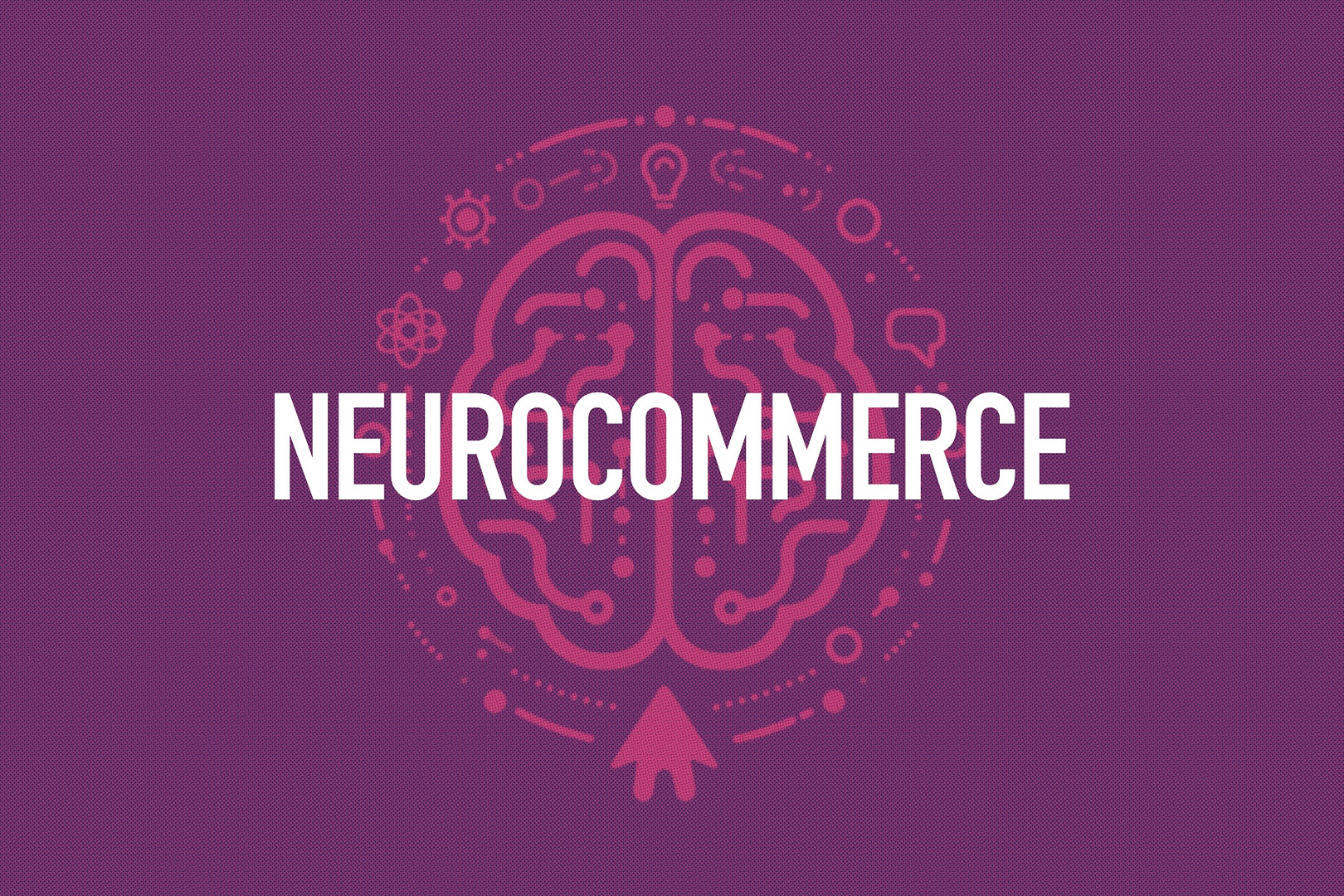Table of Contents
Neuromarketing represents the frontier where science meets consumer behaviour, offering invaluable insights into the subconscious processes that drive purchasing decisions. This discipline merges principles from neuroscience, psychology, and marketing to understand how consumers respond to marketing stimuli and why they prefer certain products or brands.
The Connection Between Neuroscience and Consumer Behaviour
At its core, neuromarketing is about understanding the “why” behind consumer decisions. Traditional marketing methods rely on observable consumer behaviours and self-reported data, which can often be misleading or incomplete. Neuromarketing, on the other hand, delves into the neurological activities that precede these actions, offering a more direct route to understanding consumer preferences and aversions.
Neuroscience has revealed that much of consumer decision-making is unconscious, driven by emotional responses and cognitive biases rather than rational analysis. For instance, studies have shown that the emotional content of an advertisement can significantly influence a consumer’s intention to purchase, with positive emotions boosting receptivity to marketing messages (Pozharliev et al., 2015). This insight underscores the importance of crafting marketing strategies that resonate emotionally, rather than solely focusing on conveying information.
Moreover, the brain’s response to visual stimuli, such as images and colours, is crucial in shaping consumer perceptions and behaviours. The fusiform face area, a part of the brain that processes faces, can also respond to the sight of brands and products, suggesting that familiar and likeable branding can activate areas of the brain associated with positive emotions (Yoon et al., 2006). This neural activity highlights the power of brand recognition and loyalty, driving home the point that effective branding is not just about visibility but about creating a positive, emotional connection with the audience.
In bridging the gap between neuroscience and consumer behaviour, neuromarketing equips marketers with the tools to not only attract attention but to foster a deeper, more meaningful engagement with their audience.
The Psychology of Online Browsing
Understanding the online consumer’s mindset is crucial for crafting digital experiences that convert. When users navigate the internet, they’re not just looking for products or services; they’re seeking solutions to their problems, answers to their questions, and ways to satisfy their desires. This journey is influenced by a myriad of factors, including website design, content relevance, and ease of navigation, all of which play a pivotal role in the decision-making process.
Factors that Influence Browsing Behaviour
Several key elements impact how users interact with online content and make purchasing decisions. Firstly, attention is a scarce commodity in the digital landscape. Websites have mere seconds to capture interest before a potential customer moves on. Visual appeal, including the use of colours and images, can grab attention, but it’s the relevance and clarity of the message that keeps users engaged.
Cognitive load, or the amount of mental effort required to navigate a website, significantly affects user experience. Websites that are intuitive and easy to use reduce cognitive load, making it more likely for users to complete a purchase. Conversely, complex navigation or overwhelming choices can lead to decision fatigue, deterring potential conversions.
Emotional triggers, such as joy, trust, or fear of missing out (FOMO), also guide online behaviours. Neuromarketing research has demonstrated that emotions profoundly impact decision-making, often subconsciously. For example, creating a sense of urgency with limited-time offers can spur action by tapping into the fear of missing out.
Principles of Neuroscientific Engagement
Delving into the role of emotions and visual stimuli offers insights into how businesses can design online experiences that resonate on a deeper level with consumers.
The Role of Emotions in Decision-Making
Emotions are the cornerstone of effective neuromarketing strategies. They can override logical considerations, driving spontaneous purchases or brand loyalty. Positive emotions, such as happiness or satisfaction, enhance memory retention and brand association. For instance, incorporating user-generated content that showcases real customers’ positive experiences can evoke trust and happiness, encouraging others to convert.
How Visual Stimuli Affect the Brain
The human brain processes images 60,000 times faster than text, making visual content a potent tool for engaging online audiences. Neuromarketing studies suggest that certain visual elements, like faces, can significantly increase empathy and connection, making messages more persuasive. Moreover, colour psychology plays a vital role in influencing perceptions and actions. For example, red can evoke urgency, while blue can instil a sense of trust and security.
Optimising online content for neuroscientific engagement involves understanding and leveraging these psychological and neurological principles. By focusing on reducing cognitive load, tapping into emotional triggers, and utilising compelling visual elements, businesses can create online experiences that not only attract attention but also encourage deeper engagement and conversion.
This exploration into the psychology of online browsing and the principles of neuroscientific engagement highlights the importance of aligning digital marketing strategies with the innate tendencies and preferences of the human brain. Through careful consideration of browsing behaviour factors and the strategic use of emotional and visual stimuli, marketers can significantly enhance the effectiveness of their online presence, turning casual browsers into committed buyers.
Optimising Website Design with Neuroscience
The design of a website significantly influences user experience and decision-making. Neuroscience and psychology offer insights into how certain design elements can make websites more attractive and effective in guiding visitors toward conversion.
The Impact of Colour Psychology
Colour is not just an aesthetic choice; it’s a powerful communication tool that can influence mood, feelings, and behaviours. For example, blue is often associated with trust, stability, and calmness, making it an excellent choice for finance or healthcare websites. In contrast, orange can create a sense of urgency or action, ideal for call-to-action (CTA) buttons or sale announcements. Using colour based on psychological principles can enhance user engagement and conversion rates.
Utilising Layout and Design for Cognitive Ease
A website’s layout should facilitate an effortless journey for the user. Neuroscience suggests that certain patterns, like the F-shaped reading pattern, dictate how users navigate content online. By aligning crucial information and CTAs with these natural reading habits, websites can increase the likelihood of engagement and conversion. Simplifying navigation, reducing clutter, and employing whitespace effectively can also minimise cognitive load, making it easier for users to make decisions.
Creating Compelling Content that Converts
Compelling content is the cornerstone of engaging websites that convert. By leveraging storytelling and persuasive language, brands can connect with their audience on a deeper level, encouraging them to take the desired action.
The Power of Storytelling in Marketing
Stories are a fundamental way humans communicate and connect. Neuroscientific research has shown that storytelling can engage multiple brain regions, enhancing memory and emotional response. By weaving brand messages into stories, marketers can create more memorable and impactful experiences. Storytelling can humanise a brand, making it more relatable and trustworthy in the eyes of consumers.
Using Persuasive Language to Trigger Action
Persuasive language employs psychological triggers that encourage users to take action. Words that evoke emotions, highlight benefits, or create a sense of urgency can significantly increase conversion rates. For example, incorporating terms like “exclusive,” “limited-time offer,” or “join now” can motivate immediate responses. The key is to understand the audience’s needs and desires, crafting messages that resonate and persuade effectively.
Leveraging Social Proof to Enhance Trust
Social proof is a powerful neuroscientific principle that influences consumer behaviour. Seeing others engage with a brand or product can validate decisions and alleviate uncertainty.
The Neuroscience Behind Social Proof
Humans are inherently social creatures, and the brain is wired to consider the actions and opinions of others in decision-making. This tendency is rooted in survival instincts; historically, following the group increases an individual’s chances of survival. In the context of online shopping, social proof can take the form of reviews, testimonials, or social media endorsements, assuring that others have had positive experiences.
Implementing Effective Testimonials and Reviews
Incorporating testimonials and reviews into a website can significantly boost trust and credibility. These elements should be authentic and relatable, showcasing real experiences from a diverse range of customers. Highlighting reviews that address common concerns or questions can be particularly effective, as they directly counteract potential objections, making it easier for prospective customers to decide to purchase.
The Importance of Personalisation
In the digital marketing landscape, personalisation is more than a buzzword; it’s a strategic imperative that leverages neuroscientific insights to enhance the customer journey. Tailoring content, offers, and experiences to individual preferences taps into the brain’s desire for relevance and significance, significantly impacting decision-making processes.
How Personalisation Affects the Decision-Making Process
Personalisation makes use of the brain’s natural tendency to pay more attention to information that is relevant and tailored to one’s interests and needs. When consumers encounter personalised content, it activates areas of the brain associated with self-relevance processing, leading to increased engagement and a higher likelihood of conversion. For example, using a customer’s name in email marketing can trigger a positive, personal connection, while recommending products based on past browsing history caters to individual preferences, making the shopping experience both convenient and enjoyable.
Strategies for Implementing Personalised Experiences
Implementing personalised experiences online can be achieved through data analysis and technology. Segmenting audiences based on behaviour, demographics, and purchase history allows marketers to create targeted messages that resonate with each group. Additionally, utilising AI and machine learning can help predict customer preferences and deliver dynamic content that adapts in real time. Personalisation should extend across all touchpoints, from email to web to social media, ensuring a cohesive and customised experience that drives conversions.
Reducing Cognitive Load for Better Conversions
The concept of cognitive load refers to the amount of mental effort required to process information. In the context of online browsing, minimising cognitive load is crucial for keeping users engaged and guiding them towards making a purchase.
Simplifying User Choices to Enhance Decision-Making
An overload of choices can overwhelm users, leading to indecision or abandonment. To enhance decision-making, websites should strive to simplify user choices. This can be achieved by offering a curated selection of products, utilising filters to narrow down options, or highlighting best-selling or recommended items. By reducing the effort required to make a decision, businesses can streamline the path to purchase.
Techniques for Streamlining Navigation and Content
Streamlining navigation and content involves organising information intuitively and eliminating unnecessary distractions. This can include having a clear and logical site structure, using concise and clear language, and employing visual cues to guide users towards important elements. Simplifying forms, optimising page load times, and ensuring mobile responsiveness are also critical for reducing cognitive load and enhancing the overall user experience.
Implementing Scarcity and Urgency
Scarcity and urgency are powerful psychological triggers that can motivate consumers to act quickly. These tactics tap into the fear of missing out (FOMO) and the desire to obtain something that is perceived as valuable because it is limited.
The Psychological Impact of Scarcity and Urgency
The principle of scarcity states that people place higher value on items that are rare or hard to obtain, while urgency creates a sense of immediate need. Both principles can lead to increased arousal and activation within the brain, prompting quicker decision-making and action. For example, limited-time offers or low-stock alerts can create a sense of urgency, encouraging users to purchase before missing out.
Best Practices for Honest Scarcity Marketing
While scarcity and urgency can be effective, it’s important to use these tactics ethically, ensuring that any claims made are genuine. Misleading customers can damage trust and brand reputation. Transparent communication about stock levels or offer expiry dates can maintain integrity while still leveraging these powerful neuromarketing strategies.
Conclusion
In the digital age, where the online marketplace is more crowded and competitive than ever, understanding the nuances of consumer behaviour through the lens of neuroscience has become paramount. “From Browsers to Buyers: Neuroscientific Tactics for Boosting Online Conversions” is not just about leveraging technology but about connecting with consumers on a human level, acknowledging the complex interplay of emotions, psychology, and cognitive processes that drive their decisions.
The journey from attracting a user’s attention to converting them into a customer is intricate and multifaceted. By applying the principles of neuromarketing, such as the impact of colour psychology, the power of storytelling, the importance of social proof, and the effectiveness of personalisation, businesses can significantly enhance their online conversion rates. These strategies are grounded in a deep understanding of human behaviour and the neuroscientific underpinnings of decision-making, offering a roadmap to more engaging, persuasive, and effective digital marketing practices.
Key takeaways from our exploration include:
- Emotional Engagement: Leveraging emotions through storytelling and persuasive copywriting can create meaningful connections with consumers, driving engagement and conversions.
- Simplicity and Clarity: Reducing cognitive load by simplifying user choices and streamlining website navigation enhances the user experience, facilitating decision-making.
- Personalisation: Tailoring content and offers to individual preferences speaks directly to the consumer’s sense of self, increasing relevance and engagement.
- Ethical Use of Urgency and Scarcity: Implementing scarcity and urgency should be done transparently to maintain trust and integrity while effectively motivating action.
As digital landscapes continue to evolve, the integration of neuroscience into marketing strategies provides a crucial edge. It allows brands to not only understand but also anticipate and respond to the subconscious drivers of consumer behaviour. This deep, empathetic approach to marketing not only boosts online conversions but also builds lasting relationships between brands and consumers, fostering loyalty and trust.
FAQs
How does neuromarketing differ from traditional marketing?
Neuromarketing relies on scientific insights into the brain’s response to marketing stimuli, offering a more direct understanding of consumer behaviour than traditional methods, which often depend on self-reported data.
Can small businesses apply these neuroscientific tactics effectively?
Absolutely. While the scale may differ, the principles of neuromarketing, such as emotional engagement and personalisation, are universally applicable and can be tailored to fit the resources and objectives of any size business.
Are there ethical considerations in using neuromarketing?
Yes, ethical considerations are paramount. Marketers must ensure that tactics are used responsibly, prioritising consumer welfare and transparency to maintain trust and integrity in brand-consumer relationships.
How can businesses measure the impact of neuromarketing strategies?
The impact can be measured through various metrics, including conversion rates, time on site, engagement rates, and customer feedback. Advanced analytics and A/B testing can also provide insights into the effectiveness of specific neuromarketing tactics.







